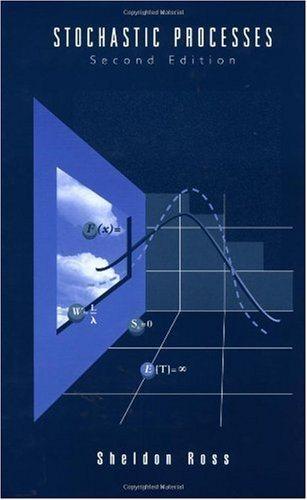Consider a particle that moves along the set of integers in the following manner If it is
Question:
Consider a particle that moves along the set of integers in the following manner If it is presently at i then it next moves to i + 1 with probability p and to i - 1 with probability 1 p Starting at 0, let a denote the probability that it ever reaches 1.
(a) Argue that a p+(1 p)a.
(b) Show that if p 1/2 /(1 - p) if p < 1/2
(c) Find the probability that the particle ever reaches n, n > 0
(d) Suppose that p < 1/2 and also that the particle eventually reaches n, n0 If the particle is presently at i, i < n, and n has not yet been reached, show that the particle will next move to i + 1 with probability 1 p and to i-1 with probability p That is, show that P{next at +1 at i and will reach n} = 1 - p (Note that the roles of p and 1 - p are interchanged when it is given that n is eventually reached)
Step by Step Answer:







